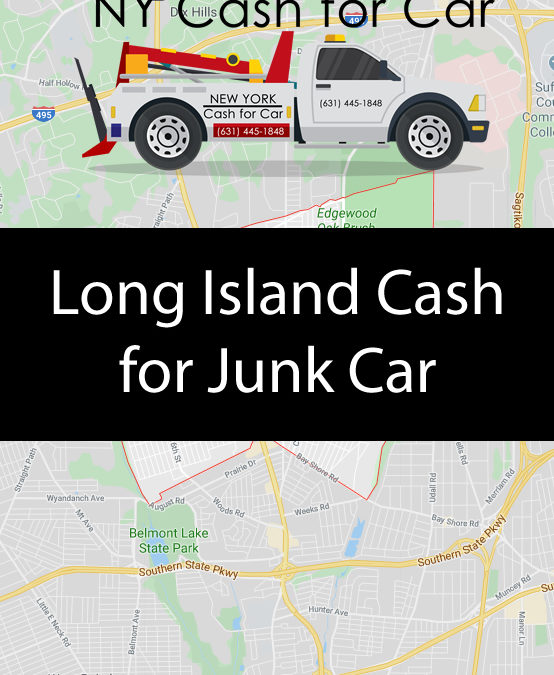Selling Your Car in Long Island: A Comprehensive Guide
Selling your car in Long Island may sound like a daunting task. But this is not the case, especially if Cash for Car New York make it a smooth process!
The prospect of selling a car can evoke a mix of emotions, from excited anticipation of an upgrade to the fond nostalgia of behind-the-wheel memories. For Long Island residents, where the suburban landscape meets the urban influence of nearby New York City, the decision to sell your car is more than logistical; it’s a step toward a new phase of mobility and opportunity. With high demand for personal vehicles and a flourishing market for eco-friendly options, selling your car in Long Island could be a smooth ride if you follow this comprehensive guide.
Preparing Your Car for Sale
First impressions are as critical in car sales as they are in most other pursuits. The journey of selling your car in Long Island starts long before you post the “For Sale” ad—it begins with preparing your vehicle to meet its new owner.
- Cleaning and Detailing – A sparkling, clean car not only appeals to buyers visually but also suggests that the car was well-maintained and cared for. Invest in a thorough cleaning and detailing job that includes a wash, wax, interior scrub, and odor removal.
- Addressing Mechanical Issues – No one wants to buy someone else’s problems. Ensure that your car is in good running order by addressing any mechanical issues. Replace or repair parts, change the oil, and check fluids. It may be worth the expense as it can significantly increase the value of your car.
- Gathering Necessary Documents – Preparation also means ensuring all relevant documents are ready. Gather your car’s title, maintenance records, and any warranty documents. If you’ve financed the vehicle, verify the payoff amount with your lender.
Setting the Right Price When Selling Your Car in Long Island
- Researching Market Value – Knowing what your car is worth is pivotal in setting an asking price. Use online tools such as Kelley Blue Book to assess the fair market value of your vehicle. Consider local demand and compare your car to similar models listed in Long Island.
- Considering Mileage, Condition, and Demand – Factor in your car’s mileage—which influences a car’s life expectancy—and its condition when setting your price. If your car brand or model is in high demand in Long Island, you might price slightly higher, especially for coveted crossovers or eco-friendly vehicles.
- Negotiating Room – Buyers love to negotiate; thus, include a little wiggle room in your asking price. Be realistic but prepared to stand your ground for a price that reflects your car’s true market value.
Connecting with Potential Buyers
- Responding to Inquiries Promptly – Quick responses to inquiries demonstrate professionalism and respect for your buyers’ time. Provide detailed answers, and offer additional information if needed.
- Scheduling Test Drives – Allow potential buyers to schedule test drives. Choose a safe, neutral location and accompany them during the test drive. Ensure that you verify their driver’s license beforehand.
- Ensuring Safety During Meetings – As you meet with potential buyers, prioritize safety. Always let someone know where you’ll be and consider having a friend accompany you.
Negotiating the Sale when Selling Your Car in Long Island
Handling Price Negotiations – Be prepared for your buyer to negotiate. Reiterate your car’s selling points and reference your research on its fair market value. Don’t rush; patience can result in a better sale price.
Knowing Your Bottom Line – Determine the lowest acceptable price for your car before negotiations begin. This bottom line should still be within a reasonable range of your car’s market value.
Being Prepared for Counteroffers – Expect counteroffers. Keep the conversation open and respectful, and steer clear of lowball offers that don’t meet your bottom line.
Completing the Sale
- Transferring Ownership and Title – After agreeing on a price, complete the necessary paperwork to transfer the title. Be clear about the terms of the sale, and never hand over the title until payment is received.
- Handling Payment Securely – Avoid scams by handling payment securely. Accept cash, cashier’s check, or a secure platform payment. Verify the buyer’s identity and ensure funds are cleared before finalizing the sale.
- Providing Necessary Paperwork – Hand over all necessary paperwork, including maintenance records and warranty documents. Offer testimony on the car’s condition and let them know you’re available should they have any questions post-sale.
Additional Tips and Resources on Selling Your Car in Long Island
Tips for a Successful Sale
From setting realistic expectations to mastering the art of negotiation, a successful car sale is a blend of strategy, intuition, and perseverance. Clean your car thoroughly, set a fair price, document everything, and remain honest throughout the process.
Recommended Resources for Selling a Car in Long Island
Local resources such as junk or new car valuation services, DMV offices, and trusted mechanics can assist you in your sale. Online communities and forums specific to Long Island may offer personalized advice and support.
By following the steps outlined in this guide, you’re setting the stage for a successful car sale in Long Island. Remember, the sale is as much about the exchange of value as it is about the sharing of trust between you and the buyer. With the local market ripe for quality, well-maintained vehicles, you stand a fantastic chance of not just selling your car but doing so at a price that’s rewarding for all involved. Good luck, and happy selling!

